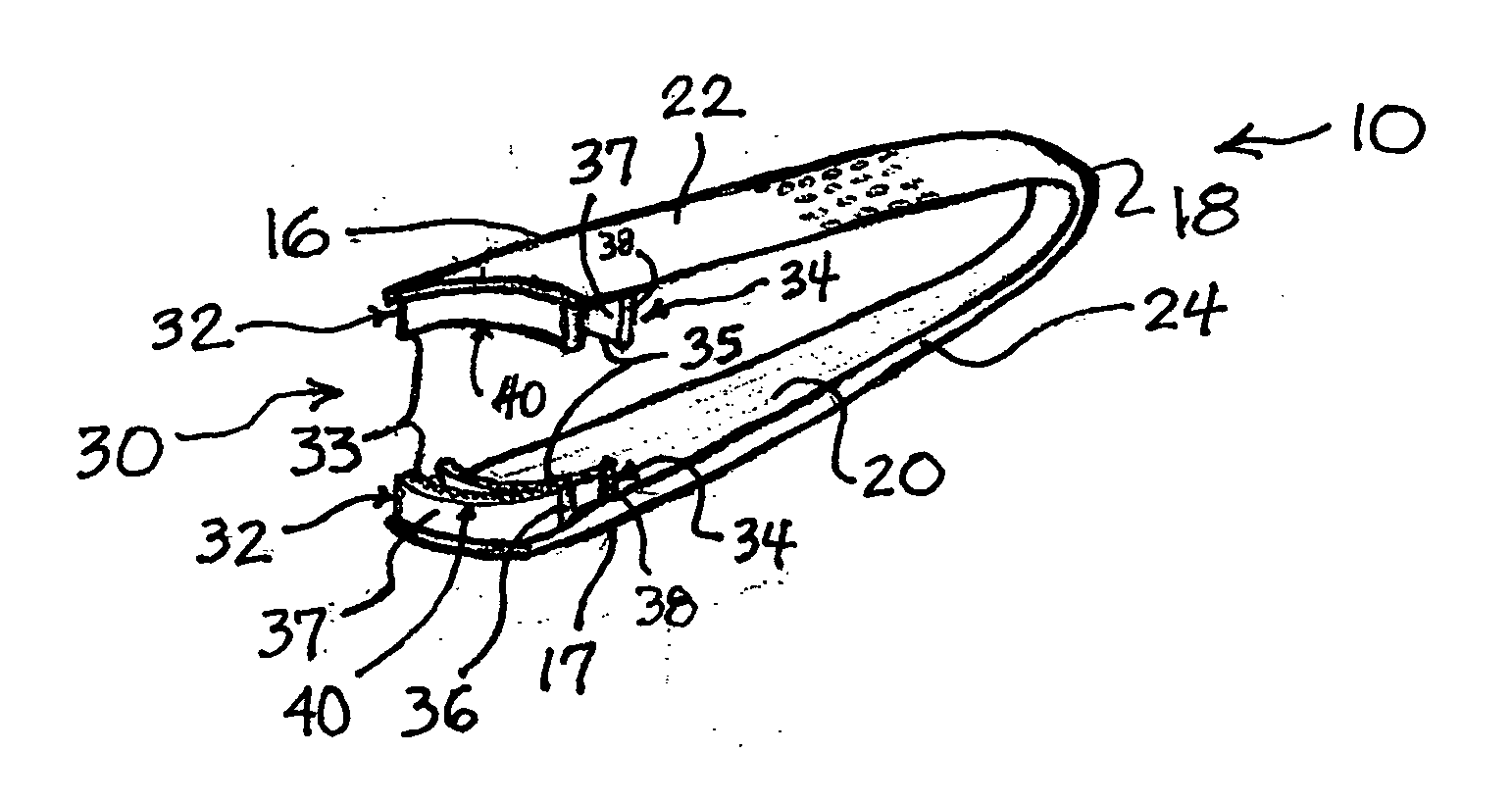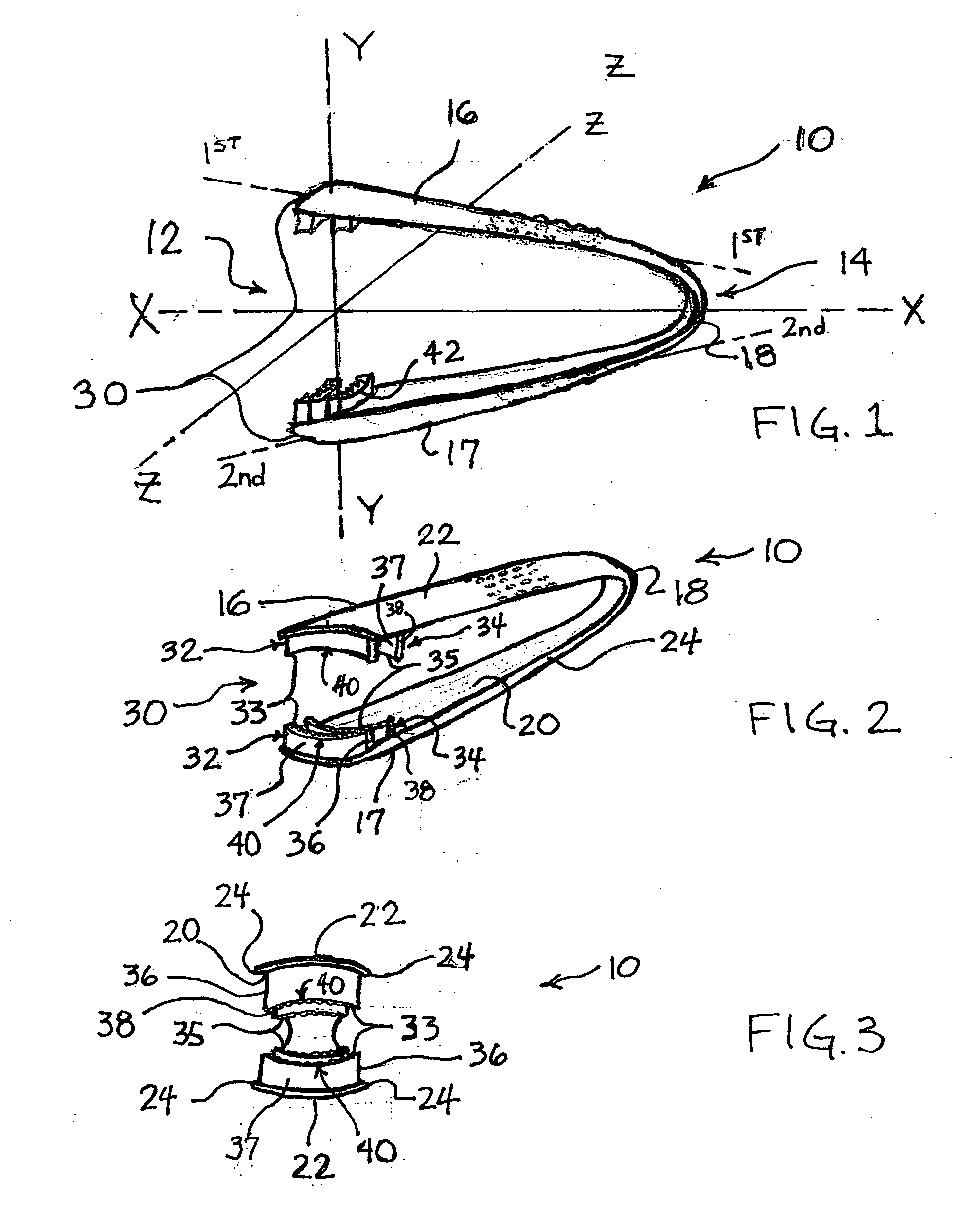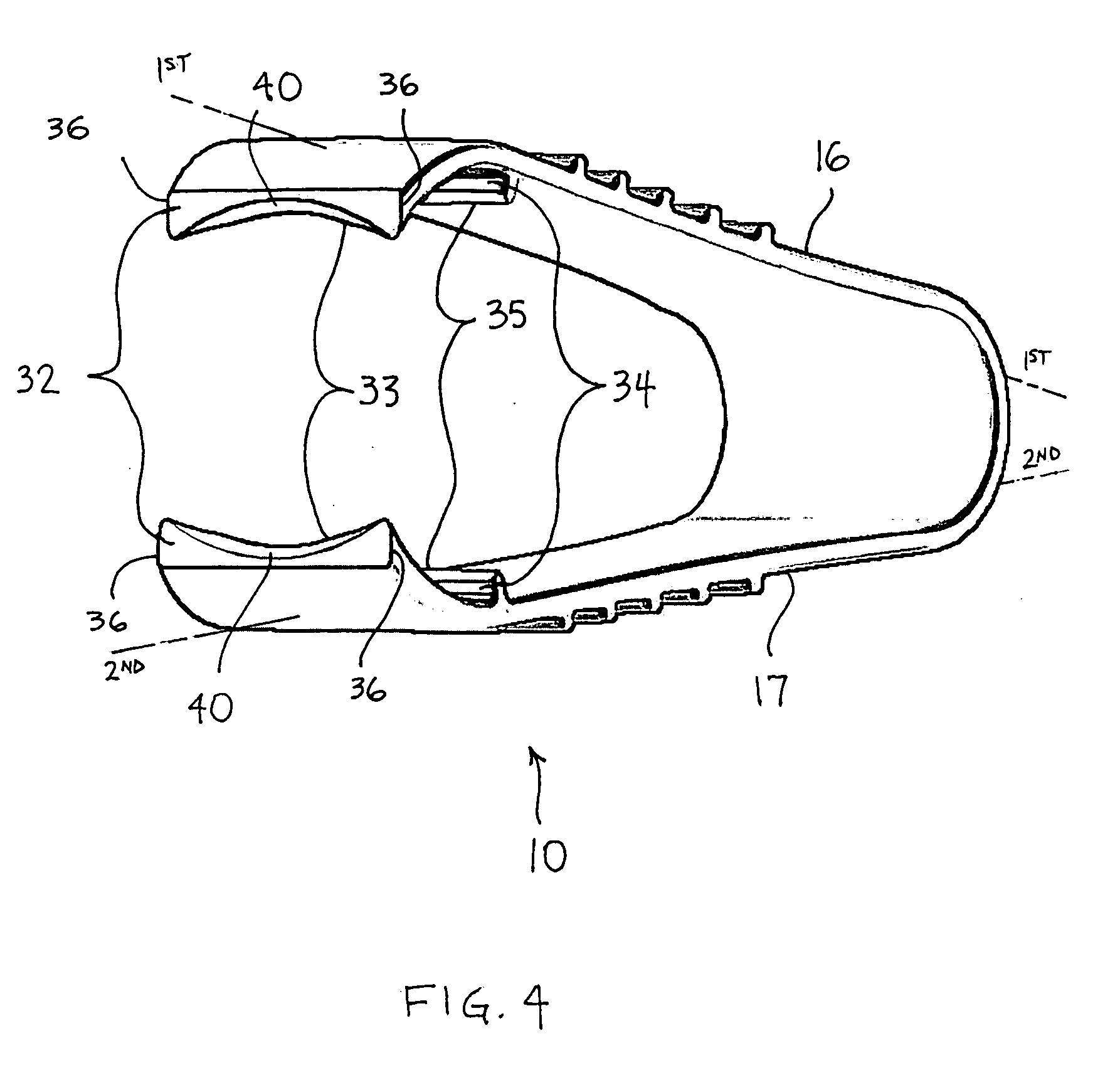Wing holder
a technology of finger manipulation and wing, which is applied in the direction of pliers, thin material handling, tableware, etc., can solve the problems of undesired stuck residues of coatings on consumers' hands, no device combine a specialized jaw structure with the ability to clench and manipulate foods
- Summary
- Abstract
- Description
- Claims
- Application Information
AI Technical Summary
Benefits of technology
Problems solved by technology
Method used
Image
Examples
second embodiment
[0045] Referring now to FIGS. 4 and 5, wing holder 10 includes arms 16 and 17 being connected by joint 18 as described previously. The distal end portions of arms 16 and 17 have an arcuate shape that extends at least partially in an inward direction from the first and second axes, respectively. Arms 16 and 17 have an approximately rectangular cross-sectional shape in a plane Y-Z, defined by axes Y and Z (see FIG. 1) in this preferred embodiment. Set of teeth 32 extend inwardly from arms 16 and 17 at an angle that is approximately perpendicular to the first and second axes. Alternatively, the distal end portion of arms 16 and 17 can be truncated to define set of teeth 32. Set of teeth 34 is positioned proximal to set of teeth 32 in each jaw 30 as described previously.
[0046] As shown in FIGS. 4-6, each row of teeth 33 preferably has a single tooth that with a tapered edge that extends between longitudinal edges 36. The edges of rows of teeth 33 define notch 40 as described previously ...
third embodiment
[0056] Referring to the third embodiment as shown in FIGS. 9 -14, when forces-A are applied to the proximal end portion of arms 16 and 17, arms 16 and 17 flex about joint 18 from the first closed position to the second open position. In the second position, the selected piece of food is positioned between the opened jaws 30 and the piece of food is retained in jaws 30 by removing at least one of forces-A applied to arm 16 and arm 17. Upon the removal of forces-A, the resilience of joint 18 moves jaws 30 to the closed position securely seizing the selected piece of food. The selected piece of food is then released by the application of force-A on the proximal end portions of arms 16 and / or 17 to move jaws 30 to the second open position.
PUM
 Login to View More
Login to View More Abstract
Description
Claims
Application Information
 Login to View More
Login to View More - R&D
- Intellectual Property
- Life Sciences
- Materials
- Tech Scout
- Unparalleled Data Quality
- Higher Quality Content
- 60% Fewer Hallucinations
Browse by: Latest US Patents, China's latest patents, Technical Efficacy Thesaurus, Application Domain, Technology Topic, Popular Technical Reports.
© 2025 PatSnap. All rights reserved.Legal|Privacy policy|Modern Slavery Act Transparency Statement|Sitemap|About US| Contact US: help@patsnap.com



